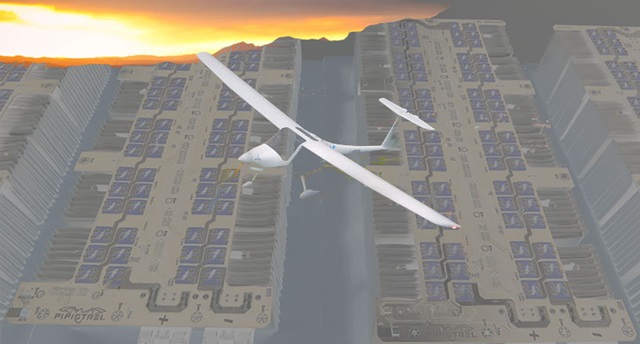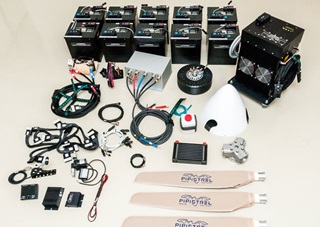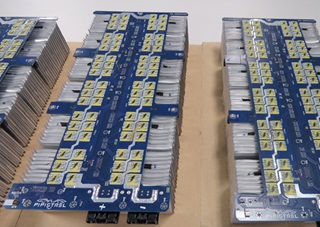Additional Resources

A fire sparked by a short circuit that was hot enough to burn through the skin of a Boeing 787-8 Dreamliner after a 2013 flight to Logan International Airport in Boston is an object lesson in the limits and dangers of lithium-based batteries. The NTSB concluded that a short within one of the isolated cells caused a “thermal runaway,” in essence a chain reaction that spread the fire to the entire battery. The fire was contained by a metal container, though tests found that the fire produced by a thermal runaway, at 2,000 degrees Fahrenheit, might not have been contained to the airplane if the incident repeated. No one was seriously hurt (the aircraft was being cleaned between flights when smoke was detected), but the incident (among others) raised questions about whether lithium is the best choice for future aircraft batteries—including batteries large enough to power aircraft propulsion and other systems.
For now, it is, and design refinements have made the batteries (subject to thermal runway if physically damaged, or if charged or discharged outside of tight parameters) safe for aviation use, regulators and aircraft makers have concluded. Pipistrel, which was snubbed by Siemens this year in a seemingly political move that cleared the way for the Airbus E-Fan to make the first manned flight across the English Channel on battery power, opted (like Airbus) for lithium-based batteries, and invested great care in designing the system that manages the lithium-polymer batteries.
“The way … most of the Li-Po users are considering the balancers and battery management is dangerous for the cells …They do not understand how the Li-Po chemistry work(s),” Pipistrel General Manager Ivo Boscarol wrote in an email exchange. “That is why we were forced to develop a safe system in house.”

A quick chemistry primer: There are two basic types of lithium-based batteries now in widespread use, lithium-ion, which uses a liquid electrolyte to provide the electrons needed to create an electric current, and lithium-polymer, which replaces the highly flammable liquid electrolyte with a polymer electrolyte (also flammable) that is flexible, allowing engineers to design them in a nearly infinite variety of shapes. Technically, a lithium-ion polymer battery design powers most small drones and model aircraft, among other applications. Some manufacturers produce “lithium polymer” batteries that are actually lithium-ion batteries in a polymer pouch, but with a liquid electrolyte, which causes confusion, though either type of battery is potentially volatile.
Boscarol said Pipistrel has now selected Enstroj, also based in Slovenia, to supply the electric motors Siemens snatched away, and the company plans to make the first deliveries in December of the Alpha Electro two-seat trainer that would otherwise have made the historic round trip with energy to spare. The Alpha Electro can fly for an hour with a 30-minute reserve left over, limits based on the storage capacity per pound (energy density, if you want to be technical) of the current generation of lithium-based batteries.
Alternative elements
Lithium-ion batteries have a long history, with early research beginning in 1912. It took until the mid-1970s for the research to get serious, and the first commercial products hit the market in the early 1990s.
Zach Favors, senior electrochemical scientist at ZAF Energy Systems, has turned his attention to another not-so-new battery technology based on zinc. Zinc-air batteries and rechargeable variants of those batteries are basically a type of fuel cell. Using zinc has several advantages, Favors said in a telephone interview. For one, the design is not prone to “thermal runaway” because the electrolyte “is basically water,” which puts fires out rather than fueling them.
“The energy density, if we do it right, is much higher,” Favors said. “The big thing with zinc air is its safety.”
The CAFE Foundation, a nonprofit organization that has long supported electric aircraft research and development, invited Favors to speak at its 2015 conference. Dr. Brien Seeley, a medical doctor who is the CAFE Foundation founder and president, is working on a new set of invitations for 2016, and noted in an email exchange the diverse efforts to both enhance lithium-based batteries and/or replace them. Among the sought-after experts, Stanford University professor Yi Cui, who is working to pick up where past research hit a roadblock, building a battery with a pure lithium anode.
"Of all the materials that one might use in an anode, lithium has the greatest potential. Some call it the Holy Grail," Chi told the university news service after publishing a paper on the work of the team he leads in 2014. "It is very lightweight and it has the highest energy density. You get more power per volume and weight, leading to lighter, smaller batteries with more power."
Other labs are working on lithium-free alternatives including a Rice University team that has developed a supercapacitor made from ultra-thin, flexible layers. Oregon State University has taken a fresh look at potassium, publishing results that challenge assumptions held for more than 80 years that this element can’t be made to work in a battery. Another lab back at Stanford, and others at the Lawrence Berkeley National Laboratory, are combining lithium with sulfur in search of better battery performance. The Li-S combination has long been assumed to be the successor to lithium-ion and LiPo designs, and Favors said his company has exclusive rights to the Li-S work being done at Berkeley Labs. Development of zinc-based battery technologies is also moving quickly.

Favors said Zinc has some key advantages over lithium that make it a strong contender for use in future aircraft batteries, among many other applications: Zinc is abundant, much unlike lithium, and non-toxic. The electrolyte is not volatile. Zinc batteries can be recycled.
“The main problem with lithium-ion batteries is that electrolyte… it’s literally like gasoline,” Favors said. Anyone who thinks that’s an exaggeration should check out this YouTube video compiled by Russians, demonstrating the effects of hammers, over-volts, shorts, and other insults on lithium-based batteries. (You really don’t want to try it at home.)
Zinc-air cells will need some work to be suitable for aircraft use, and Favors said lithium-sulfur may beat them to the marketplace. (Stanford’s team notes that pure lithium anodes can increase energy three-fold and reduce production cost four-fold, though that approach must still overcome many obstacles.)
Zinc-air cells are open to the atmosphere, requiring oxygen to function. They are also “poisoned,” Favors said, “for lack of a better word,” by carbon dioxide, which reacts with the materials inside. Preventing cells from drying out in flight will be another challenge. And in the aircraft context, a zinc-air cell may need to be paired with a nickel-zinc battery that ZAF is also developing as a replacement for lead-acid batteries, to provide the burst of energy needed for takeoff. Zinc-air cells can deliver a weaker current for a longer period, and could be made suitable for use in cruise flight, Favors said.
“Zinc-air is still probably a couple of years out,” Favors said, speaking to commercial applications. “It’s also about a quarter of the cost” of current-generation lithium-based systems.
For now, most of the money is still flowing into lithium research, Favors said. As that shifts, development of alternatives will accelerate.
“I think now people are starting to realize that lithium batteries are starting to peak in terms of (potential),” Favors said. “It’s really all a matter of getting the right funding in place so we can realize some of these advances.”




